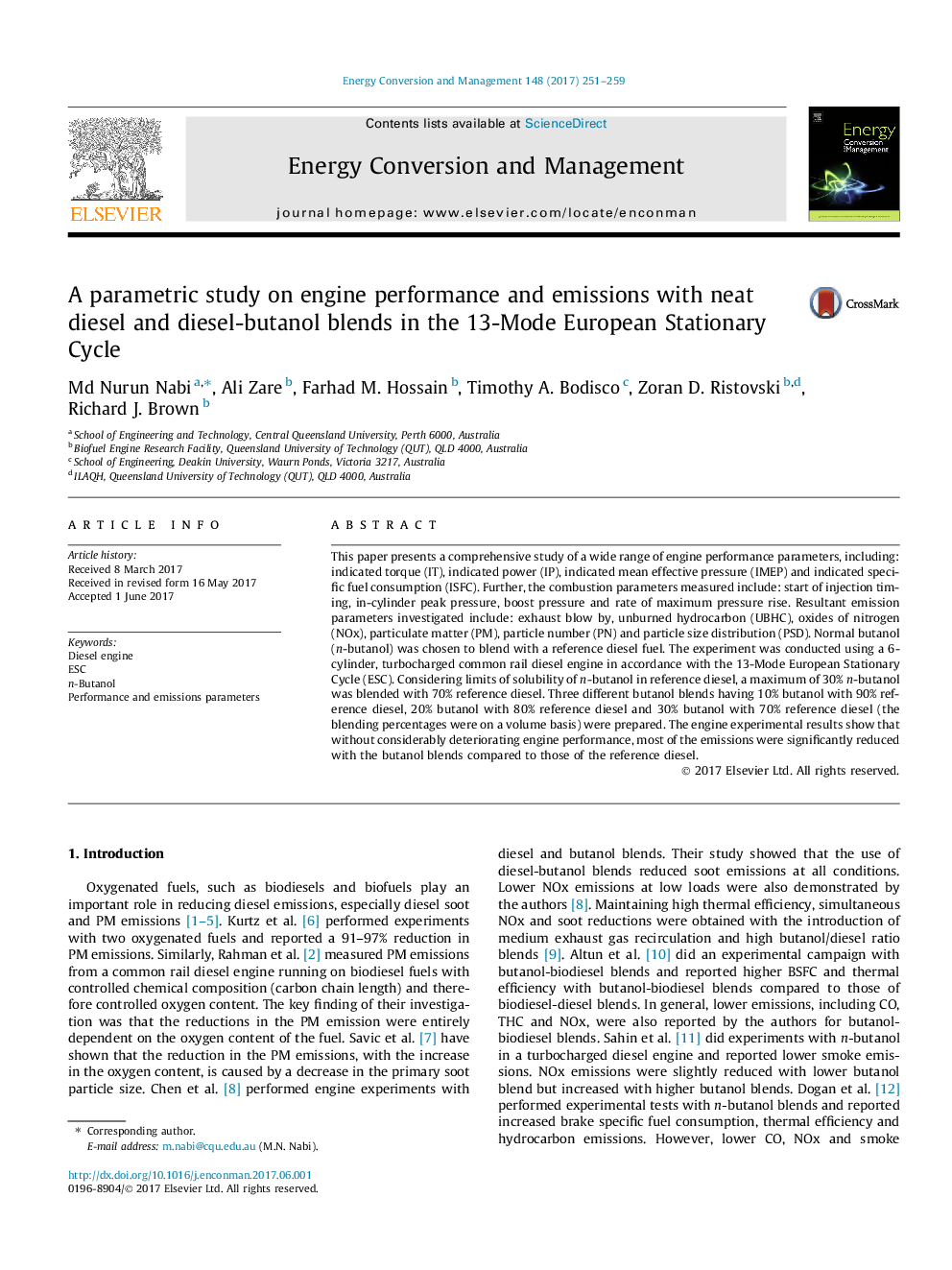| Article ID | Journal | Published Year | Pages | File Type |
|---|---|---|---|---|
| 5012607 | Energy Conversion and Management | 2017 | 9 Pages |
Abstract
This paper presents a comprehensive study of a wide range of engine performance parameters, including: indicated torque (IT), indicated power (IP), indicated mean effective pressure (IMEP) and indicated specific fuel consumption (ISFC). Further, the combustion parameters measured include: start of injection timing, in-cylinder peak pressure, boost pressure and rate of maximum pressure rise. Resultant emission parameters investigated include: exhaust blow by, unburned hydrocarbon (UBHC), oxides of nitrogen (NOx), particulate matter (PM), particle number (PN) and particle size distribution (PSD). Normal butanol (n-butanol) was chosen to blend with a reference diesel fuel. The experiment was conducted using a 6-cylinder, turbocharged common rail diesel engine in accordance with the 13-Mode European Stationary Cycle (ESC). Considering limits of solubility of n-butanol in reference diesel, a maximum of 30% n-butanol was blended with 70% reference diesel. Three different butanol blends having 10% butanol with 90% reference diesel, 20% butanol with 80% reference diesel and 30% butanol with 70% reference diesel (the blending percentages were on a volume basis) were prepared. The engine experimental results show that without considerably deteriorating engine performance, most of the emissions were significantly reduced with the butanol blends compared to those of the reference diesel.
Keywords
Related Topics
Physical Sciences and Engineering
Energy
Energy (General)
Authors
Md Nurun Nabi, Ali Zare, Farhad M. Hossain, Timothy A. Bodisco, Zoran D. Ristovski, Richard J. Brown,
